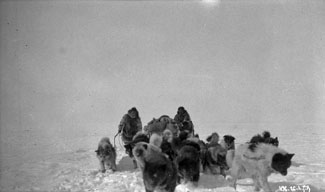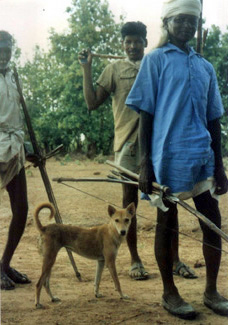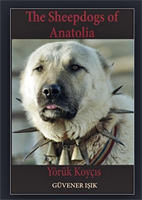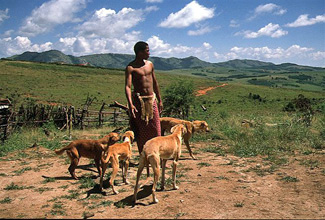From the Editor: Hammering Home the Point
A Qimuksiqti and Her Dogs: Remembering Siu-Ling Han
Gone Without a Trace? Searching for the Origins of
Dog Transport in the Archaeological Record
Dogs of Knud Rasmussen’s 2nd and 5th Thule Expeditions
Psychology of Aboriginality
Rabies in Igluliq
Media Review: Aboriginal Life as Presented in Art Forms
IMHO: This Changes Everything
Navigating This Site
Index of articles by subject
Index of back issues by volume number
Search The Fan Hitch
Articles to download and print
Ordering Ken MacRury's Thesis
Our comprehensive list of resources
Defining the Inuit Dog
Talk to The Fan Hitch
The Fan Hitch home page
Editor: Sue Hamilton
Webmaster: Mark Hamilton
The Fan Hitch, Journal
of the Inuit Sled Dog, is published four
times a year. It is available at no cost
online at: https://thefanhitch.org.
The Fan Hitch welcomes your letters, stories, comments and suggestions. The editorial staff reserves the right to edit submissions used for publication.
Contents of The Fan Hitch are protected by international copyright laws. No photo, drawing or text may be reproduced in any form without written consent. Webmasters please note: written consent is necessary before linking this site to yours! Please forward requests to Sue Hamilton, 55 Town Line Rd., Harwinton, Connecticut 06791, USA or mail@thefanhitch.org.
This site is dedicated to the Inuit Dog as well as related Inuit culture and traditions. It is also home to The Fan Hitch, Journal of the Inuit Sled Dog.
The Fan Hitch welcomes your letters, stories, comments and suggestions. The editorial staff reserves the right to edit submissions used for publication.
Contents of The Fan Hitch are protected by international copyright laws. No photo, drawing or text may be reproduced in any form without written consent. Webmasters please note: written consent is necessary before linking this site to yours! Please forward requests to Sue Hamilton, 55 Town Line Rd., Harwinton, Connecticut 06791, USA or mail@thefanhitch.org.
This site is dedicated to the Inuit Dog as well as related Inuit culture and traditions. It is also home to The Fan Hitch, Journal of the Inuit Sled Dog.

The start across Simpson Peninsula, [N.W.T.]. May, 1926
Credit: Library and Archives Canada;
photographer: unknown
The Psychology of Aboriginality
by Guvener Isik
March, 2017
I am not certain whether we all are talking about the very same subject in the very same way about nativity and aboriginality. People who follow aboriginality do it for various psychological reasons. I felt the urge to look into the psychological roots of my preoccupation with aboriginality. My preferred method is imitating traditions as near as I can, because aboriginality sits on traditions. I say “method”, because under the circumstances, methods replace traditions and way of lives. When the modernity pulled traditions one by one from under the aboriginal ways, aboriginality became a featherless bird.
But then why dwell on aboriginality? Why not to just dump it into a dust bin and join the modern ways? According to the Oxford dictionary, aboriginal is “inhabiting or existing in a land from the earliest times or from before the arrival of colonists”. In connection to that description, the attraction for me must be in aboriginality’s antiquity and its lack of centralization combined with aboriginal animals’ and humans’ higher degree of internalizing the wild. The wild is not only important because of its romantic connotations, but also because only through understanding the wild type we can understand the biology behind domestic animals, plants and ourselves. Understanding agouti hair color in Canidae and blue feather in Columbidae is the basis to understand all the other colors. Before carrying on, it has to be noted that centralization via linearization is the destroyer of the wild and the aboriginal, which makes any focal point malicious.

INdog:
the primitive aboriginal dog of India
photo: G. Das
One concept opens the door for another. The aboriginal
stands between the domestic and the wild. It may come down
to the beauty in aboriginal through its close connection to
the wild. While the beauty aspect of it deserves to be
investigated separately, for now I will look into what
happens when we go after the aboriginality.photo: G. Das
Chasing aboriginal everything is sailing against the wind and at times it is spitting towards the wind. People who are even clearly clever do not understand it and evade the subject, because they are programmed to follow the unremittingly updated line. This has nothing to do with intelligence, but with mental alignment and emotional positioning of the soul. Hence, dogs or goats or any landrace keeping and living is not independent from what we do or what we want to be. To flourish aboriginal we need to look towards its source and practice. This means clashing with ourselves, our past and the current conditions. To be aboriginal one needs to combat on several fronts. Perhaps talking about aboriginals is therapy. It helps to reduce the pain of struggle, although it does not eradicate the source of the pain.
I am not downright optimistic. I am fighting a battle that I know I will lose, but this is all I know. Resisting, even when we are captured, ensures not to be enchained. How long we live has no importance from this moral perspective. The critical aspect of life is how we live it and how we die. Because of my nature, I could not accept the arguments of modern dog or livestock keeping practices as their focus is essentially disabling life forms and making those completely dependent on man principally which, in turn, we become what we keep. At this point, my feeling is that I am after aboriginality, because there must be traces of aboriginality in me. I ended the first part of my book The Sheep Dogs of Anatolia:
 |
“Another reality is, there are not many Yörük left who pursue their traditional life style. Their tents, golden coins, wooden handmade tools, kilims, motifs on the carpets and saddles, and most importantly, their almost untouched language, along with their herds and dogs are almost extinct. They departed as they came, without any compromise and without being a joke for the rest of the world. It is better not to see them in a corrupted form, and let them go with their brave dogs on their noble horses. It is most respectful to say farewell, when their pride is still alive.” |
For Yörük self-annihilation was preferable to immobility which is the substance of slavery. Aboriginal dog keeping aboriginally can only be a chosen life style today, but even then one has to recognize the robust finance capitalism basis of cultural erosion. I have an aboriginal born Anatolian in the UK. Although the greatly delogicized British animal import system placed all kinds of obstacles in front of me for supposedly protecting the animal health of the island, while ignoring thousands of people coming daily from all corners of the earth, I had to fly him to the UK from the US for emotional reasons. But I say to people that neither Germany nor the UK is a place to keep Anatolians, Tazis or Laikas in the aboriginal sense, because not only are dogs, but people are pets as well in the collectivized Europe where the prospects to think freely is merely a memory. It is not comfortable and proper to keep an Anatolian in an overly domesticated, regulated, digitized and mechanized population, because my kind is perceived as a maverick. A loose cow on the side of a road can cause traffic chaos in the UK. People love to make a big scene out of it. A dog having a walk on its own can make the people on the street to be alarmed in Germany. A free dog! Inconceivable. Whereas, being forced to disregard the state of freedom must be the source of tension. For the domesticated it does not. Alejandro Jodorowsky, captured this psyche well by saying, “Birds born in a cage think flying is an illness.”
Anything that is not controlled and spills off the script is a source of tension! Compared to Europe, one can still keep Anatolians in the rural US with less intrusion and regulation, but it is still not good enough. Then it leaves me no choice. Although colonized, I regularly return to mentally drained Turkey where I can breathe sheep dogs as those dogs breathe true to their origins for now in places where the aboriginal cultures are giving their last breaths. Only for now because, once production, cultivation and breeding are regulated and linearized, the foundation of aboriginality is shattered. One cannot exercise aboriginality where control addict bureaucrats, the digitalized wildlife interventionist, the priests of science, the information hoarders manage wolves in “the wild”, rape them with chips in the name of “information”. It is these sociopathic characters who killed the wild not only in the United Europe, but in the partitioned Africa as well. If so, what is the likelihood that aboriginality can be preserved? The chances are less than very slim! However, resistance is sweet!

Swaziland
Hunter
Photo: J. Gallant
The instinct of being alive is overriding to being dead.
Thus the questions are “Should we compromise from being
aboriginal? Could we afford not to compromise? How far one
can conciliate? At what point does the conciliation lead to
the insolvency of aboriginality?” The answers to these
questions are determined by one’s energy level and personal
position towards life. The direction and the momentum of
modern human life are so forceful that someone who is born
into the modern life will have hard time to resist against
the current. For me, I do what I can to keep whatever the
aboriginal I have in my possession. I do not blame the weak who cannot swim against the current, and remain up-to-the-minute, but I loathe those who use the term and betray it all the way down to its bones.
I see two kinds of betrayers: those who consciously betray the aboriginals and those who are modern zombies, the zomboriginals. The first group, not knowing that aboriginality is of plurality adopts a centralized approach. They redefine the aboriginal and mass sell it. They engage in squaring the circle. The second group has excuses. With a lazy mind and a pale soul, they are under the influence of clubs and media. They try to tame the aboriginal to make it acceptable in their social circles.
An aboriginal cannot be a breed. One cannot devise a breed and keep it aboriginal. An “aboriginal breed” is an oxymoron term. It is dead on arrival.
A single concept cannot explain the derivations of landrace or modes of presence, but interconnected bloodlines with transitional forms and behavior do. The multiple quantifiers of the landrace resulting in autonomous forms of lines correspondingly designate aboriginality. Thence, for me adopting “landrace” in lieu of “breed” is sensible.
Now suddenly, the concept “autonomy” injected a connection into my mind between Benjamin Franklin and aboriginality. Franklin said, "Only a virtuous people are capable of freedom. As nations become more corrupt and vicious, they have more need of masters." His statement can also be pointed at the requirements for aboriginal life style. Aboriginal dogs are not corrupt, they are not controlled by a central mind, collective obedience and consensus; therefore they are relatively free. They are the last link that one can get as close as possible to their wild forms. Their relative freedom comes from their symbiotic life style with people based on the work they generate. Their work is their means to trade with people. Workability is the basis for respect for animals and people for the aboriginal man. If work is not perceived as virtue, but free ride just for being alive is good enough, then Franklin was wrong. Wolves hunting deer work and they are free. They are free to be responsible to feed their cubs. Dogs pulling sledge work; they are respected. Canned food eater dogs have rights, but lack responsibility. They wag their tails, sleep and are tolerated. The meaning of their existence is to be felt mercy for. I have no tolerance and mercy for a sewage rat in my house, but I can still recognize it for what it is for it lives a risky life. It is a parasite, but it does not beg as a canned food eater does. For this, the latter cannot generate respect. An aboriginal dog is not a wolf who domesticated itself into human life style, and it does not beg. This dog means business and does not mess around. An aboriginal dog has no right, but claims life.
Saluki owners in Jordan photo: Sir Terence Clark
Dogs of aboriginal societies have been on the radars of new breed speculators and have been facing exploitation. Then as a challenge, clubs sprouted to round these up, fictionalize, describe, sort, package and sell. The yoke of the dog clubs is the burdensome yoke of self-righteousness and legalistic dog-keeping law. Their regulations make dog keeping burdensome and centralized, because they demand obedience. Any aboriginal dog going into their breed grinder is quickly de-aboriginalized. After dealing with gold stocks and digital money, people are conditioned to spend inflationary fictitious dogs. An aboriginal dog keeper’s obedience is directed towards the nature of his dog and the traditions behind it. Aboriginal dog keeping is not necessarily taxing, but it requires an undomesticated person with faith in the land and in the gold that is “physical”. Conforming to the changing ways of life is hard. Nonetheless, once one understands the historical purpose of aboriginal animals, this understanding becomes the force behind the necessity to take an action to actualize the aboriginal. This understanding ought to come with the awareness that our experiences and we are the same.
The final aspect of my kind’s fixation with aboriginality is with our innate elements that we are held together with. Our biological composition calls for the wildness; we are born different than the domestic humanstock, so we react differently. One can effortlessly witness this clear behavioral difference in first generation aboriginal dogs; in the way they walk, eat, sleep, remember, learn and sniff the air. Assuredly, while the aboriginal is a challenge and the aboriginality is challenging, the reason for my tiny optimism to keep it alive lies in here:
“For my yoke is easy and my
burden is light."
Matthew
11:30